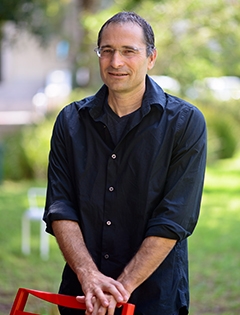A “1-2 punch” against human disease
Features

By combining CRISPR with massively parallel singlecell RNA sequencing, Prof. Ido Amit has made it possible to manipulate gene functions within hundreds of thousands of single cells—and also to understand the impact of each genetic change, in extremely high resolution. A single experiment conducted with the new method may be equal to thousands of experiments based on previous approaches, making it a potential springboard for significant progress both in genetic engineering and medical applications.
Prof. Amit chose to demonstrate the new system, which he calls CRISP-seq, by focusing on a particularly busy biological “junction”: the immune system.
Using the new system to probe the “wiring” of innate immune cells that play a critical role in our ability to combat pathogens, Prof. Amit and his team were able to identify genes important for the function of this important network of cells. These experiments also succeeded in illustrating, in high resolution, how these gene circuits direct a complex and concentrated response against invading pathogens.
“There are diverse decisionmaking circuits in immune cells, but pinning down their activity is difficult, because their function is constantly in flux,” Prof. Amit says, who published this study in Cell together with lead authors Drs. Diego Jaitlin, Ido Yofe and Assaf Weiner, and research student David Lara- Astiaso. “Our challenge was to use the CRISPR gene editing technology to target multiple genes simultaneously, including combined targets in the same cell, and then identify resulting changes to the cell and its function."
The researchers then faced a new type of “big data” - consisting of hundreds of thousands of cells and many thousands of genes expressed in each cell - with quite a few missing values. “By linking cells with similar behaviors, something like the algorithms Netflix uses to group people who like similar movies, we were able to identify previously unrated function for many genes,” says Dr. Weiner, who developed the algorithms to analyze the data.
‘A new molecular microscope’
Combining CRISPR with massively parallel single cell RNA sequencing can provide insight that neither method alone would be able to yield. Moreover, the versatility of CRISP-seq suggests that it can be used in the future to investigate many open questions, and produce new results that no one can yet predict.
“CRISPR, on its own, is a blunt research tool,” says Prof. Amit. “Most studies so far have looked for black-or-white types of effects, but the majority of processes in the body are complex and even chaotic.”
According to Prof. Amit, the advent of CRISPR revolutionized scientists’ ability to understand and edit immune circuits, and the new combined system may further heighten CRISPR’s impact. “We hope that our approach will be the next leap forward, providing the ability to engineer immune cells for immunotherapy, while paving the way for many new investigations, in a range of scientific disciplines.”
The research results were published together with descriptions of a similar technology developed at the Broad Institute in Boston and the University of California, San Francisco.
Prof. Ido Amit is funded by David and Molly Bloom, BLG Trust, Comisaroff Family Trust, European Research Council, Alan and Laraine Fischer Foundation, Drs. Herbert and Esther Hecht, Beverly Hills, CA, Leona M. and Harry B. Helmsley Charitable Trust, Mr. and Mrs. Harold Hirshberg, Park Ridge, NJ, Isa Lior, Israel, David M. Polen Charitable Trust, Rising Tide Foundation, Rosenwasser Fund for Biomedical Research, Steven B. Rubenstein Research Fund for Leukemia and Other Blood Disorders, Estate of Alice Schwarz-Gardos, David and Fela Shapell Family Foundation INCPM Fund for Preclinical Studies, Prof. Amit is the recipient of the Helen and Martin Kimmel Award for Innovative Investigation.
http://www.weizmann.ac.il/immunology/AmitLab

Prof. Ido Amit








